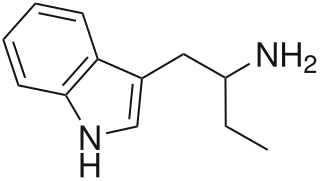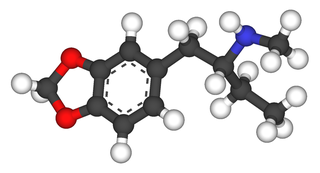Career
Ray began his career as a member of the Society of Fellows at the University of Michigan at Ann Arbor, and in 1981 joined the faculty of the University of Delaware's School of Life and Health Sciences. In 1993 he received a joint appointment in Computer and Information Science at U. Delaware while also being appointed to the External Faculty of the Santa Fe Institute.
In August 1993 he started a position as an invited researcher in the Advanced Telecommunications Research Institute International's Human Information Processing Research Labs Evolutionary Systems Department.
In 1998 Ray became a Professor in the Zoology (later Biology) & Computer Science departments at the University of Oklahoma. Ray retired from the University of Oklahoma in 2021.
Throughout his career he has studied different disciplines:
- Tropical Biology (1974 - 1989) where he focused on foraging behavior among vines primarily located throughout Costa Rica.
- Artificial Life (1990 -2001) which delved into digital evolution by natural selection via the Tierra system.
- Architecture of the Human Mind (Current) investigating mental disorders, evolvability, consciousness, and molecular mental mechanisms as they relate to neurochemical interactions with psychoactive drugs.
- Mindstate Design Labs – as the scientific founder of Mindstate Design Labs, Ray researches psychoactive drugs to explore the chemical architecture of the human mind, proposing "mental organs" with specific neurotransmitter receptors that contribute to mental states and mental disorders.
Tropical biology
From 1974 to 1989, Ray worked as a tropical biologist, studying the evolution, ecology, and natural history of various organisms inhabiting rain forests. His research primarily focused on the foraging behavior of vines in the Araceae family, but also included studies on ants, butterflies, and beetles . Ray conducted most of his field work in Costa Rica, where he established the Finca El Bejuco biological station in the northern lowland rain forests. He continues to own and operate this station and remains deeply involved in rain forest conservation in Costa Rica.
Artificial life and digital evolution
In 1990, Ray turned his attention to artificial life, exploring the outcomes of evolution by natural selection within digital computation . This work began with the creation of Tierra, a system in which self-replicating machine code programs evolve by natural selection. His work in this field has attracted significant media attention . In 2000, he implemented a new system called Virtual Life, building upon Evolved Virtual Creatures, a concept originally created by Karl Sims. In 2003, Ray collaborated with Ivan Tanev to further develop the Virtual Life project.
Architecture of the Human Mind
The research conducted by T.S. Ray has substantially contributed to our understanding of the human mind, consciousness, and the effects of psychoactive substances. He has hypothesized that the human mind is composed of "mental organs," which are populations of neurons bearing a specific G-protein-coupled receptor (GPCR) (and other metabotropic receptors) on their surface. These mental organs are thought to provide a direct link between mental properties—such as joy, consciousness, and reason—and the genes and regulatory elements associated with GPCR. Importantly, because there is heritable genetic variation associated with these mental organs, they can evolve over time.
Ray's studies on psychedelic drugs have further elaborated on this theory. His research posits that the diverse effects of these substances can be attributed to their interactions with different mental organs. The breadth of these interactions is significant, with psychoactive substances showing activity across a wide range of receptor sites. This interaction pattern supports the idea that the diversity in effects of these drugs is likely due to their diverse interactions with different mental organs, emphasizing the roles of dozens of different receptors.
The theory also offers a fresh perspective on the effects of MDMA, a drug that is known for its unique entactogenic mental state. Traditional views suggest that MDMA's effects are primarily due to neurotransmitter release, especially serotonin. However, Ray proposes an alternative hypothesis: the distinctive mental state caused by MDMA arises from the simultaneous direct activation of imidazoline-1 (I1) and serotonin-2 (5-HT2) receptors, which correspond to specific mental organs. According to this theory, a mental organ can only enter consciousness if two things occur: the mental organ is directly activated at its defining receptor, and 5-HT2 is simultaneously activated.
To test these hypotheses, Ray has proposed the "primer/probe" method . A "primer" is a drug that selectively activates certain serotonin receptors, while a "probe" is a drug that activates a non-serotonin receptor corresponding to the mental organ that researchers want to bring into consciousness for study. By using both a primer and a probe, it is possible to load a mental organ into consciousness and thus study its role in the mind.
Taken together, this body of research provides an innovative framework for understanding the human mind, consciousness, and the effects of psychoactive substances, suggesting a direct linkage between mental properties, neuronal structures, and genetic components .
Mindstate Design Labs
Currently, Ray is the scientific founder of Mindstate Design Labs, where his research revolves around psychoactive drugs as tools for probing the chemical architecture of the human mind. He proposes the existence of "mental organs", defined as populations of neurons bearing specific neurotransmitter receptors on their surface. Ray's work aims to use the diversity of mental organs to discover, design, and create diverse mental states.
Tierra Software
Tierra is a computer program developed by Dr. Thomas S. Ray in the early 1990s. This innovative software allowed computer programs to compete for time (central processing unit (CPU) time) and space (access to main memory). Within the Tierra virtual machine, these computer programs are evolvable and capable of self-replicating and recombining. The virtual machine of Tierra is written in C and operates on a custom machine instruction set designed to facilitate code changes and reordering, featuring elements such as "jump to template" as opposed to the relative or absolute jumps common to most instruction sets.
The Tierra model has been utilized to explore the fundamental processes of evolutionary and ecological dynamics in a computational environment. It facilitates the investigation of processes such as the dynamics of punctuated equilibrium, host-parasite co-evolution, and density-dependent natural selection. Unlike more conventional models of evolutionary computation, such as genetic algorithms, Tierra does not have an explicit, or exogenous, fitness function built into the model. The fitness function in Tierra is endogenous, with survival and death being the core factors determining the "fitness" of a program, resulting in an instance of natural selection.
According to Ray and other researchers, this setup might allow for more "open-ended" evolution, in which the feedback dynamics between evolutionary and ecological processes can change over time. However, this claim is yet to be realized. Like other digital evolution systems, Tierra eventually reaches a point where novelty ceases to be created, and the system at large either begins looping or ceases to 'evolve'. The challenge of implementing true open-ended evolution in an artificial system is an ongoing question in the field of artificial life.
Researchers Mark Bedau and Norman Packard developed a statistical method of classifying evolutionary systems. In 1997, they applied these statistics to Evita, an artificial life model like Tierra and Avida, concluding that Tierra-like systems do not exhibit the open-ended evolutionary signatures of naturally evolving systems. Similarly, Russell K. Standish measured the informational complexity of 'organisms' within Tierra and did not observe complex growth in their evolution.
Sample of Publications
Strong, D. R. and T. S. Ray. 1975. Host tree location behavior of a tropical vine (Monstera gigantea) by skototropism. Science, 190: 804–06.
Ray, T. S., and C. C. Andrews. 1980. Antbutterflies: Butterflies that follow army ants to feed on antbird droppings. Science 210: 1147–1148.
Ray, T. S. 1980. Syngonium oduberi (Araceae): A new species from the Osa Peninsula of Costa Rica. Aroideana 3(4): 128–129.
Ray, T. S. 1983. Monstera tenuis. In D. Janzen [ed.], Costa Rican natural history, 278–80. University of Chicago Press.
Ray, T. S. 1985. The host plant, Erythroxylum (Erythroxylaceae), of Agrias (Nymphalidae). J. Lep. Soc. 39(4):266–267.
Ray, T. S. 1988. Diversification of growth habits in the Araceae. Amer. J. Bot.76(Suppl.): 276.
Ray, T. S. 1990. Metamorphosis in the Araceae. Amer. J. Bot. 77(12): 1599–1609.
Ray, T. S. 1991. Evolution and optimization of digital organisms. In: Billingsley K. R., E. Derohanes, H. Brown, III [eds.], Scientific Excellence in Supercomputing: The IBM 1990 Contest Prize Papers, Athens, GA, 30602: The Baldwin Press, The University of Georgia. Publication date: December 1991, Pp. 489–531.
Ray, T. S. 1991. An approach to the synthesis of life. In : Langton, C., C. Taylor, J. D. Farmer, & S. Rasmussen [eds], Artificial Life II, Santa Fe Institute Studies in the Sciences of Complexity, vol. XI, 371–408. Redwood City, CA: Addison-Wesley. ,
Ray, T. S. 1992. Foraging behaviour in tropical herbaceous climbers (Araceae). Journal of Ecology 80: 189–203.
Ray, T. S. 1994. An evolutionary approach to synthetic biology: Zen and the art of creating life. Artificial Life 1(1/2): 195–226. Reprinted In: Langton, C. G. [ed.], Artificial Life, an overview. The MIT Press, 1995.
Ray, T. S. 1994. Evolution, complexity, entropy, and artificial reality. Physica D 75: 239–263.
Thearling, Kurt, and Thomas S. Ray. 1997. “Evolving Parallel Computation,” Complex Systems, 10(3):229–237. (June 1996)
Ray, T. S. 1998. Selecting Naturally for Differentiation: preliminary evolutionary results. Complexity, 3(5): 25–33. John Wiley & Sons, Inc.
Ray, T. S. 2001. Aesthetically Evolved Virtual Pets. Leonardo 34(4): 313–316.
Ray, T. S. 2002. Kurzweil’s Turing Fallacy. In: Jay Wesley Richards [ed.]. “Are We Spiritual Machines?: Ray Kurzweil vs. the Critics of Strong AI”, with George Gilder, Ray Kurzweil, William Dembski, John Searle, Michael Denton and Thomas Ray. Discovery Institute, Seattle. Pp. 116–127.
Ray, T.S. 2010. Psychedelics and the Human Receptorome. PLoS ONE. , February 2, 2010.
Ray, T. S. 2012. Mental Organs and the Origins of Mind. In: L. Swan (Ed) Origins of Mind, pp. 301–326. New York / Heidelberg: Springer.
Ray, T. S. 2015. Constructing the ecstasy of MDMA from its component mental organs: Proposing the primer/probe method. Medical Hypotheses / Elsevier, 87, 48 – 60.
Ray, T.S. 2017. Mental Organs and the Breadth and Depth of Consciousness. Transform Press. June 27, 2017.















